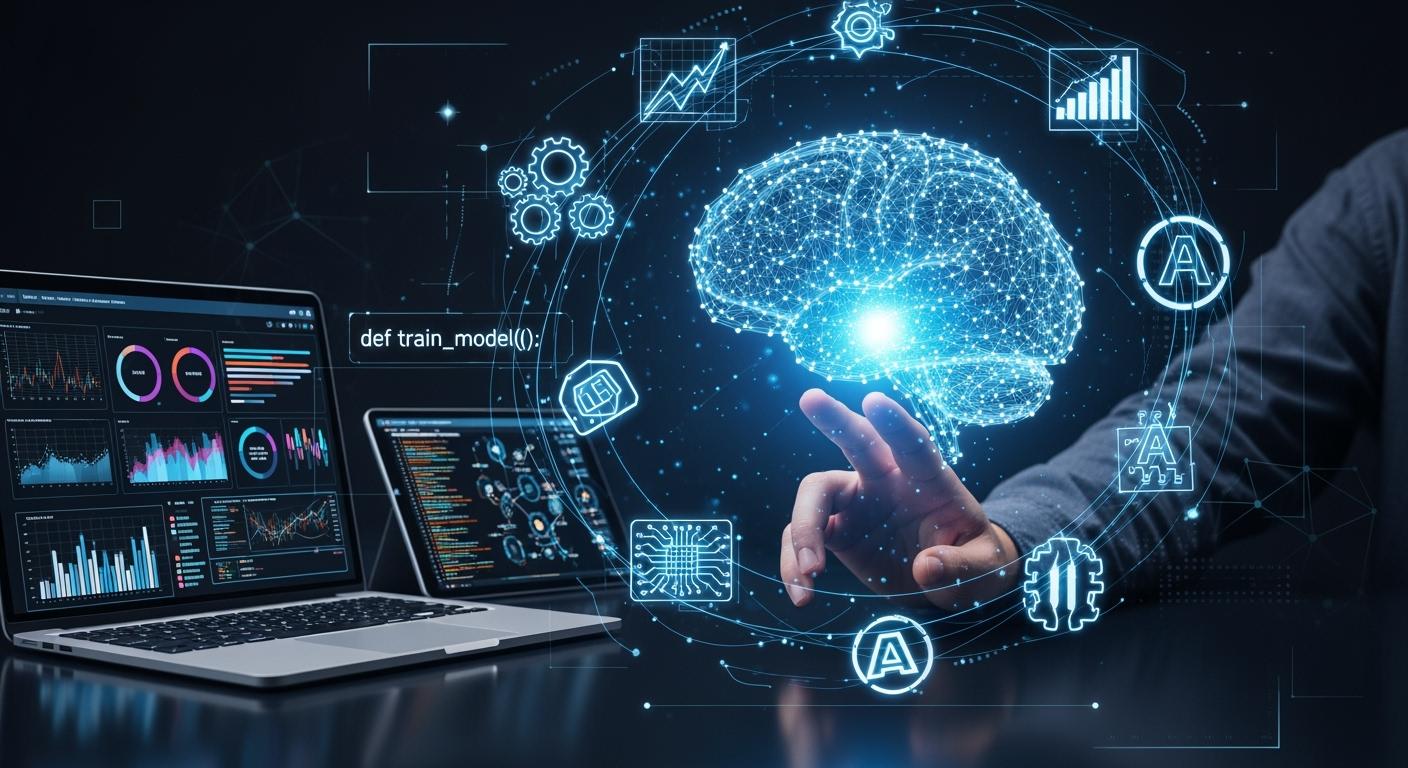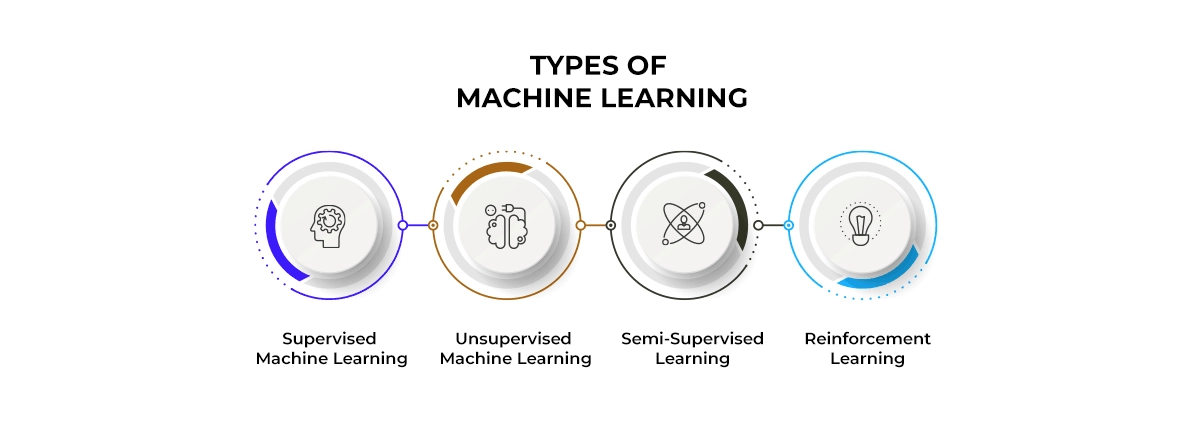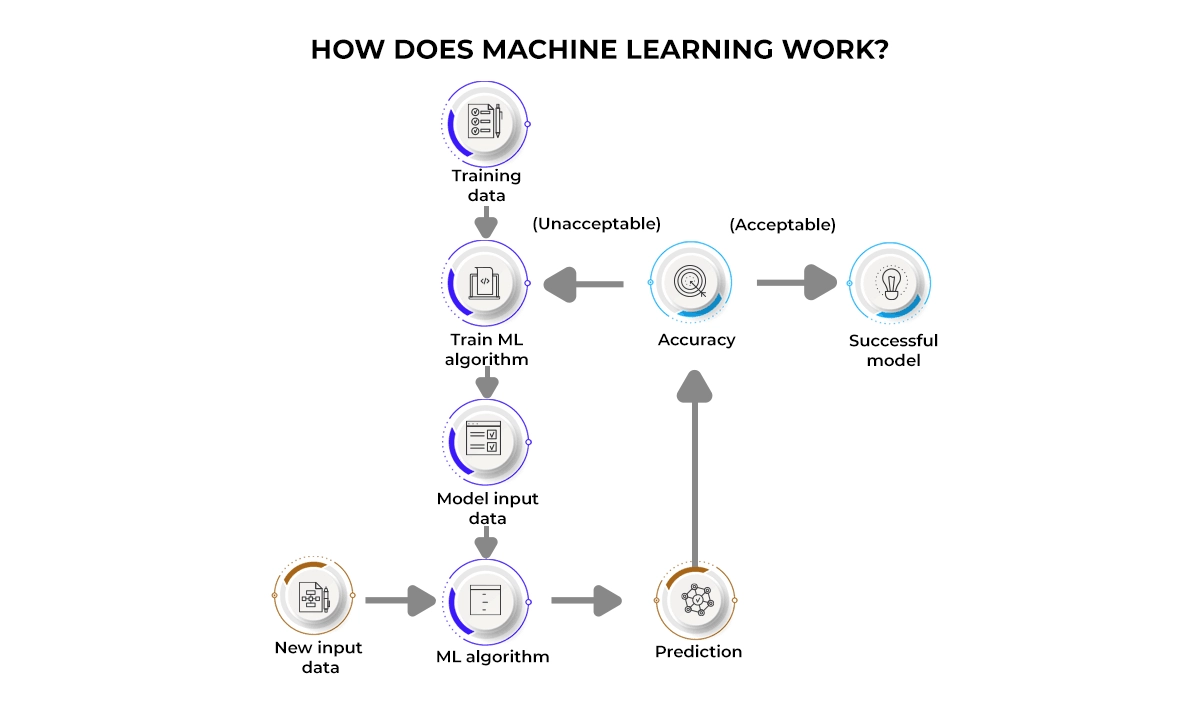
Have you ever wondered how Netflix knows your next favorite show or how your email filters out spam so effectively? The answer lies in a transformative technology that is reshaping our world: Machine Learning (ML). More than just a buzzword, ML is a powerful subset of artificial intelligence that enables systems to learn and improve from experience without explicit programming. In this comprehensive guide, we'll demystify ML, explore its core concepts, and uncover how cutting-edge hardware, like advanced optical transceivers, is fueling its growth. Whether you're a tech enthusiast or a business leader, understanding ML is no longer optional—it's essential.
📝 Key Takeaways
Machine Learning (ML) lets computers learn from data. They do not need to be told what to do step by step. This helps computers make choices using patterns they find.
There are many types of machine learning. These include supervised, unsupervised, semi-supervised, reinforcement, and deep learning. Each type works best for certain jobs.
Machine learning models get better as they get more data. This helps them handle new things without always needing changes.
Machine learning is used in many ways. It helps with email filtering, product suggestions, fraud spotting, and self-driving cars. We use it in lots of technology every day.
Knowing about machine learning can help you at school and work. It gives you chances in many areas, like data science and artificial intelligence.
📝 What is Machine Learning, Really?
At its heart, Machine Learning is about teaching computers to recognize patterns and make decisions based on data. Instead of following rigid, pre-programmed instructions, ML algorithms build a model from sample data, known as "training data," to make predictions or decisions.
Think of it like this: You don't teach a child to recognize a cat by listing every single rule ("has whiskers, pointy ears..."). You show them many pictures of cats. Similarly, an ML model is shown thousands of labeled images until it learns the underlying patterns of "cat-ness" on its own.
This ability to learn from data makes ML uniquely powerful for tackling complex problems where traditional programming falls short.
📝 The Four Key Types of Machine Learning

To grasp the landscape of ML, it's helpful to understand its primary learning paradigms. The table below breaks them down clearly.
Learning Type | How It Works | Real-World Example |
|---|---|---|
Supervised Learning | The model is trained on labeled data. It learns to map input to output. | Spam Detection: The model learns from emails pre-labeled as "spam" or "not spam" to filter new messages. |
Unsupervised Learning | The model finds hidden patterns or intrinsic structures in unlabeled data. | Customer Segmentation: Grouping customers based on purchasing behavior without prior categories. |
Semi-Supervised Learning | Uses a small amount of labeled data and a large amount of unlabeled data to improve learning accuracy and efficiency. | Medical Image Analysis: A few labeled MRI scans (e.g., "tumor" or "no tumor") can help a model learn from a vast archive of unlabeled images. |
Reinforcement Learning | An agent learns to make decisions by performing actions and receiving rewards or penalties. | Self-Driving Cars: The AI learns to navigate by receiving positive rewards for safe driving and penalties for errors. |
Let's delve a bit deeper into Semi-Supervised Learning, as it addresses a very common real-world scenario: labeled data is expensive and time-consuming to acquire, while unlabeled data is abundant. This approach sits perfectly between supervised and unsupervised learning. The model uses the small labeled dataset to grasp the basic concepts and then uses the vast pool of unlabeled data to understand the overall data structure and improve its generalization. This makes it a highly practical and cost-effective ML approach for business intelligence where comprehensive data labeling is often a bottleneck.
Understanding these types is the first step in identifying the right strategy for your specific automation and intelligence challenges.

📝 From Theory to Practice: High-Impact Applications of ML
Machine learning is not a technology of the distant future; it's actively driving innovation today. Its applications are vast and touch nearly every industry:
Healthcare: ML algorithms can analyze medical images (X-rays, MRIs) to detect diseases like cancer with astonishing accuracy, often aiding radiologists in early diagnosis.
Finance: Fraud detection systems use ML to analyze millions of transactions in real-time, identifying anomalous patterns that signal potential fraudulent activity.
Retail & E-commerce: Ever seen "customers who bought this also bought..."? That's ML-powered recommendation engines at work, significantly boosting sales and customer engagement.
Natural Language Processing (NLP): Virtual assistants like Siri and Alexa, as well as translation services, rely on ML to understand and generate human language.
📝 The Unsung Hero: How Optical Modules Power the ML Revolution
This is where the physical infrastructure comes into play. While algorithms get the glory, they are nothing without vast amounts of data and immense computational power. This happens in massive data centers, where optimizing data center performance with machine learning is becoming standard practice.
At the core of these data centers are high-speed networks that connect thousands of servers. This is where optical modules become critical. These small, hot-pluggable devices are the workhorses of modern data communication, converting electrical signals from servers into light signals that travel through fiber optic cables at blistering speeds.
Why does this matter for Machine Learning?
Data Transfer Speed: ML training, especially for deep learning models, requires moving terabytes of data between servers (e.g., in a GPU cluster). Slow data transfer creates a bottleneck, drastically slowing down training times. High-speed optical modules ensure this data flows seamlessly.
Low Latency: In distributed ML systems, servers need to communicate with minimal delay. Low-latency optical connections are essential for synchronous training, where models are updated in near real-time across the cluster.
Bandwidth and Scalability: As models grow larger and datasets more complex, the demand for network bandwidth skyrockets. Advanced optical modules provide the necessary capacity to scale ML infrastructure efficiently.
For organizations looking to build a robust AI/ML infrastructure, choosing the right hardware is as important as selecting the right algorithms. This is where a specialist like LINK-PP provides a critical edge. LINK-PP's high-performance optical transceivers are engineered to meet the demanding requirements of modern AI workloads. For instance, the LINK-PP LQD-CW400-DR4C, a 400G QSFP-DD DR4 module, offers exceptional density and power efficiency, making it an ideal choice for scaling machine learning operations in hyperscale data centers.
By ensuring reliable, high-speed connectivity, components like the LINK-PP LQD-CW400-DR4C directly contribute to faster model training, more efficient resource utilization, and ultimately, a quicker time-to-insight for data scientists.
📝 Challenges and The Road Ahead
Despite its potential, ML is not without challenges. Issues like data privacy, algorithmic bias ("garbage in, garbage out"), and the "black box" nature of some complex models require careful attention and ethical frameworks.
The future, however, is bright. We are moving towards more automated ML (AutoML), which will make the technology more accessible. Furthermore, the convergence of ML with other fields like the Internet of Things (IoT) and edge computing will unlock new possibilities we are only beginning to imagine.
Ready to Harness the Power of Machine Learning?
Machine Learning is a foundational technology that is redefining what's possible. From enhancing customer experiences to driving scientific discoveries, its impact is profound and growing. But to truly leverage its power, a strong, high-performance infrastructure is non-negotiable.
📝 FAQ
What is the main goal of machine learning?
You use machine learning to help computers learn from data. The main goal is for computers to find patterns and make choices. You do not need to write every rule for them.
What do you need to start a machine learning project?
You need data and a clear problem to solve. You also need a way to check if your project works. Good data helps your model learn well and make good guesses.
What makes deep learning different from other machine learning types?
Deep learning uses neural networks with many layers. These layers help computers learn hard patterns in data. Deep learning can help computers know faces or understand speech.
What are common problems you face with machine learning?
You may have trouble with bad data or bias. Sometimes, models are hard to explain. You need to check your data and answers to stop mistakes.
What jobs use machine learning today?
You see machine learning in jobs like data scientist and AI engineer. Software developers use it too. Many fields use machine learning, like healthcare, finance, and transportation.




